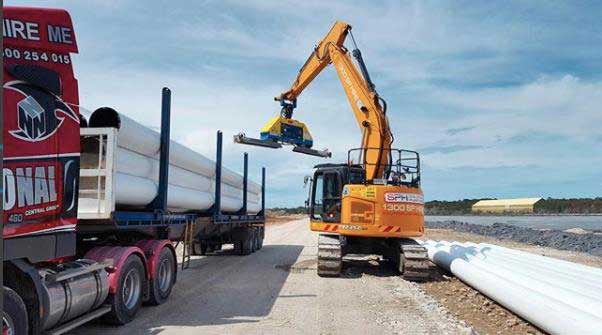Technology is always changing and developing, and we are starting to see the evolution of self-driving cars and robotics playing a part in every-day life. But how does this technology get onto the construction site?
Working in construction can have many arduous and difficult tasks for the average person. Many businesses look for ways to make use of technology and improve construction work to be easier, more productive and safer for everyone on the site. To do this, the invention of self-driving excavators, loaders and diggers etc. may very well be seen on a construction site near you in the future.
Autonomous skid steer
Built Robotics, started by an ex-Google engineer, has created a self-driving skid steer to shake up the construction industry. Traditionally, operators would sit inside the cab of the loader for all tasks, however with this new technology they can now program the coordinates of the hole that needs excavated, and then stand back and watch the machinery do all of the work.
Sensors are used across the equipment to enable it to “see” the world around them. And, because of so much movement and vibration that is bound to happen during a normal work day, the sensors used on this piece of equipment are specifically designed to withstand massive amounts of vibrations, dirt and dust.
The biggest motivator for creating this piece of equipment was to reduce the number of injuries and incidents taking place on the construction site. The monotonous work involved in driving such equipment can also make it easy to ‘zone-out’ whilst on the job, resulting in preventable mistakes.
Loaders, excavators and construction vehicles
There are a number of technology businesses now looking to build and design construction vehicles to help create a better workplace. Fully autonomous loaders, excavators and other construction vehicles are in the works, both with and without cabs and with operators either standing by the equipment as it works, or back at the site office.
Even the use of trucks to be self-driving is on the cards. Trucks that can drive all throughout the night without the need of a human can be hugely beneficial to both the construction industry and other food and manufacturing industries to help supply goods.
All of these technologies can help to improve the livelihood and health of people who would normally have to work lengthy hours, and can reduce injury and illness.
How does it all work?
Depending on the company and what is on offer, fully equipped and ready-to-use machinery may be sold. Alternatively, some companies are looking to provide construction sites and businesses with the sensors required to drive the equipment, and these sensors are then installed onto machinery already owned. Using a digital geofence the safety of people both on and off the construction site, as well as other equipment and surrounding buildings and structures, is ensured from the automated machinery.
Before beginning any work, it is first essential to ‘map’ the construction site. These ‘maps’ are created by a number of ways, either by laser scanners, mobile mapping, total stations, aerial imaging or drones. Civil engineers can then use these maps to build a 3D model of the site development plans. Once plans are created, the machinery and sensors are set up alongside cameras and a GPS system to pinpoint exactly where the equipment is in relation to the map/site. Using real-time data sent back to the software from all of the sensors and other pieces of equipment, the autonomous equipment can be instructed, either by the software or by a human, to dig/excavate/clear certain areas of the map at various lengths and depths.
80-90% of the work is then carried out automatically by the machinery. However, a human can still start and stop the machinery if and when necessary. The operator simply has to map out the coordinates for the machinery in the appropriate software and they can then supervise the machine to ensure it is working in accordance with the plans. The real-time data sent back to the operator advises them of what work has been carried out and where exactly it has happened. Other important details such as fuel consumption, speed and engine temperature can also be tracked and sent back to the operator.
Skilled operators are still needed
Because the machinery can work more than eight hours a day, there appears to be an opportunity for construction owners and managers to see a boost in productivity and work output than with human workers. But, this doesn’t mean the loss of thousands of jobs. People will still be needed to operate the machinery, ensure it is working safely, and to plan and continue to do some machinery work that may not be quite capable by autonomous means.
The thought of automatic equipment and machinery may seem a little scary to some, especially those working in the construction industry. The thought of losing work is a major worry, however many designers and inventors of such technology very much believe this doesn’t mean the end of all drivers and operators in the construction industry. In fact, these autonomous pieces of equipment can make the construction industry a lot safer and better to work in. With safer work practices, better productivity and the technology to eliminate mistakes, we can look forward to a future of improved work sites for everyone involved.




